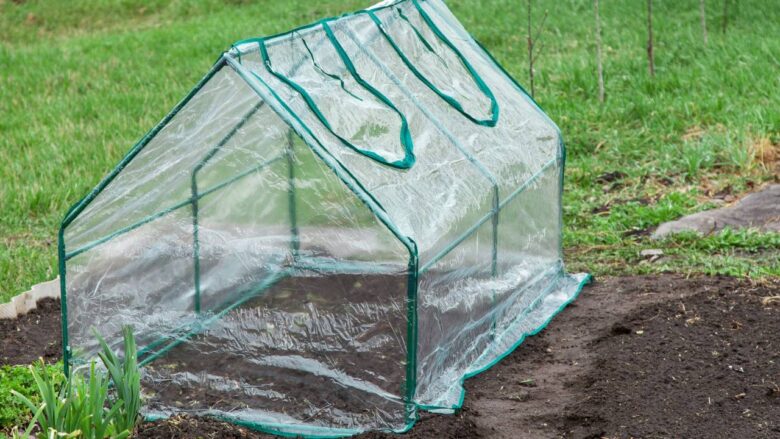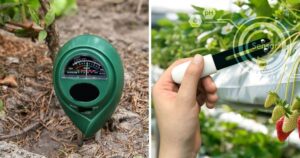For many people, gardening is a passion rather than just a hobby. But issues with space limitations or bad weather often dampen the excitement. Portable greenhouses are a revolutionary tool that can help growers overcome these challenges. No matter where you live, you can use a portable greenhouse to grow a variety of plants all year round. This in-depth book explores the world of portable greenhouses and gives you the knowledge you need to select, assemble and maximise your greenhouse for successful farming.
1. Information About Portable Greenhouses:
A portable greenhouse is a small mobile building designed to provide optimal growing conditions for plants. Typically, the structure consists of a lightweight frame wrapped in a clear substance, such as polycarbonate or plastic. To meet different needs and locations, these greenhouses are available in different sizes and styles.
2. Advantages of Mobile Greenhouses:
- Extend the Growing Season
Extending the growing season is one of the main benefits of a portable greenhouse. Gardeners can protect plants from frost by controlling the indoor climate. This allows them to be planted earlier in the spring and growth can continue into the fall or even winter.
- Defence Against Insects
By providing protection against pests and diseases, portable greenhouses help reduce the use of chemical pesticides. In this enclosed space, your plants’ production will increase and their health will be maintained.
- Flexibility and Convenience
Because portable greenhouses are removable, gardeners can move plants to better light or shelter from additional weather as needed. This flexibility is especially useful for renters or people with limited outdoor space.
3. How to Choose the Best Portable Greenhouse:
Consider the following factors when choosing a portable greenhouse:
- Size and Shape
Once you have determined the available space, choose a size and shape that is suitable for your garden or terrace. Make sure you have enough space for the plants you want to grow, both in terms of height and surface area.
- Contents Calibre
Look for high-quality cladding materials that provide UV protection and tear resistance, as well as a sturdy steel or aluminium frame. A strong structure can withstand more weather changes.
- Control of Temperature and Ventilation
There must be sufficient ventilation to prevent plants from burning and to provide them with fresh air. Choose a version with removable windows or built-in vents that you can open or cover as needed.
4. How to Build a Portable Greenhouse:
- Place of Residence
Choose a location with plenty of sunlight, preferably six to eight hours per day. Consider the wind direction and make an effort to locate the greenhouse away from areas that experience strong wind gusts.
- Put It Together
Before installation, pay close attention to the manufacturer’s instructions. Having extra hands can help ensure that construction is done correctly and safely.
- Organise and Shelve
Make the most of the available space with shelves and arrange your plants according to the light and height they need. By doing this, you ensure that each plant receives sufficient light and ventilation.
5. Get the Most Out of Your Portable Greenhouse:
- Hydration and Relative Humidity
Check the greenhouse humidity regularly. Choose a watering system that suits the size of your greenhouse and the needs of your plants. To maintain ideal humidity, consider installing a misting system.
- Temperature Regulation
Use a thermometer to check the internal temperature. Ventilate the greenhouse in warm weather to prevent overheating. To protect your plants from frost in the winter, consider investing in a heater or thermal blanket.
- Selection of Plants
Although many plants thrive there, some plants are better suited to a greenhouse environment than others. Start with vegetables such as peppers, tomatoes and leafy greens. You can also try flowers and herbs that need to be grown in a confined environment.
Conclusion:
For gardeners looking to overcome weather obstacles and space limitations, portable greenhouses provide a useful option. No matter where you live, you can have a successful gardening experience by choosing the perfect greenhouse, assembling it properly and using efficient gardening methods. Embrace the adaptability of a portable greenhouse and enjoy gardening success all year.
FAQs:
1. What is a portable greenhouse?
A portable greenhouse is a compact, movable structure designed to create an optimal growing environment for plants. It consists of a lightweight frame covered with clear material such as plastic or polycarbonate that can be easily assembled and moved to suit the gardener’s needs.
2. How can a portable greenhouse extend the growing season?
Portable greenhouses allow gardeners to control the indoor environment and protect plants from frost and harsh weather conditions. This controlled environment allows planting earlier in the spring and extends the growing season into the fall or winter, allowing plants to grow and cultivate longer.
3. What should you pay attention to when choosing a mobile greenhouse?
When choosing a portable greenhouse, consider its size and shape to ensure it fits the available space and meets your gardening needs. The quality of the materials is crucial for durability and UV protection. Additionally, look for features such as ventilation and temperature control options to maintain an optimal environment for your plants.
4. How do you build a portable greenhouse?
To build a mobile greenhouse, you must first choose a location with sufficient sunlight and protection from strong winds. Follow the manufacturer’s installation instructions carefully and consider using shelves to maximise space and organise plants according to their light and air circulation needs.
5. What are some tips to maximise the potential of a portable greenhouse?
To maximise the potential of your portable greenhouse, regularly monitor and manage internal temperature and humidity levels to ensure your plants receive adequate water and fresh air. Choose plants suitable for greenhouse cultivation, such as vegetables, herbs and flowers, that require a controlled environment. If you manage these aspects correctly, you can have a successful and productive gardening experience.



